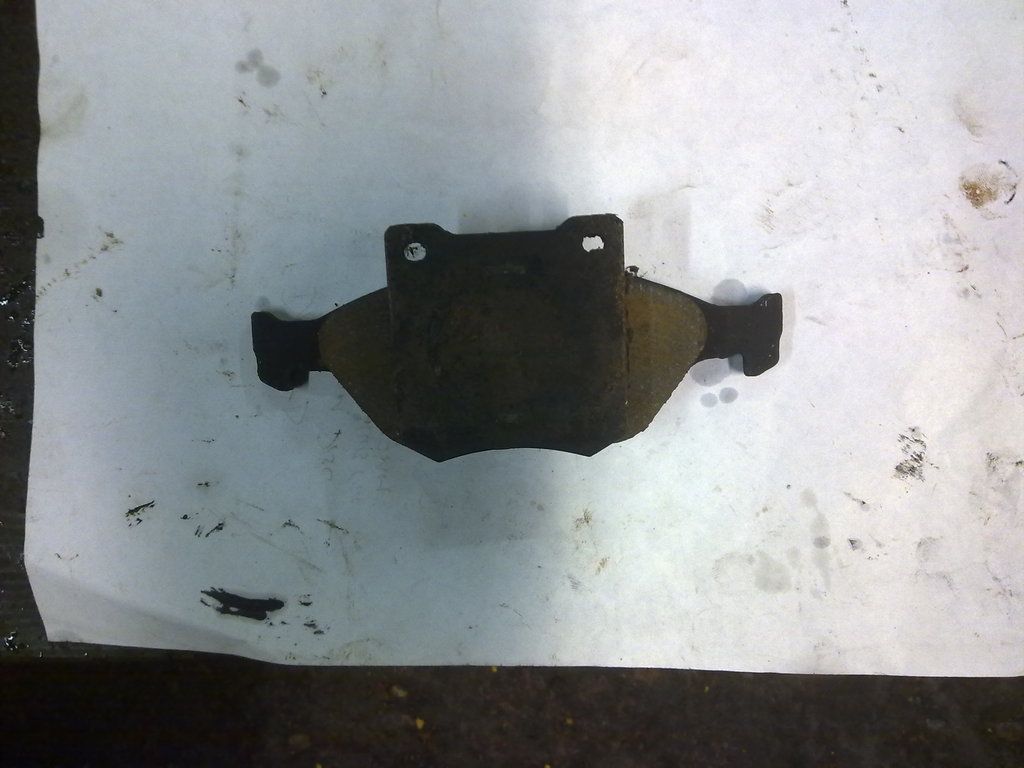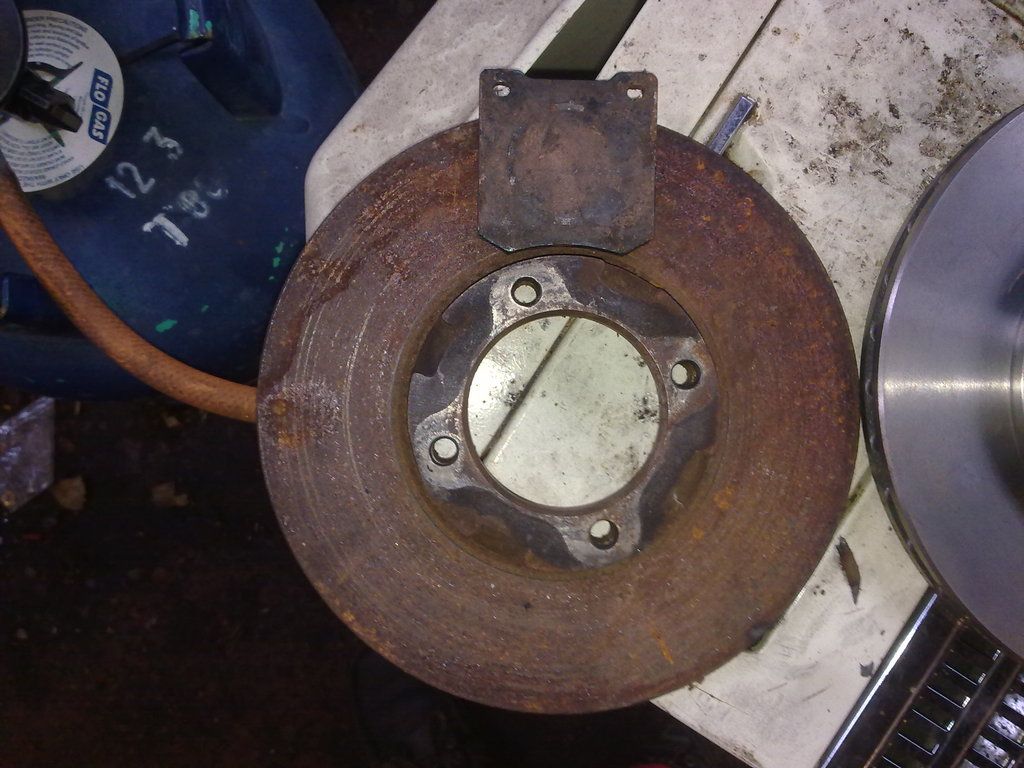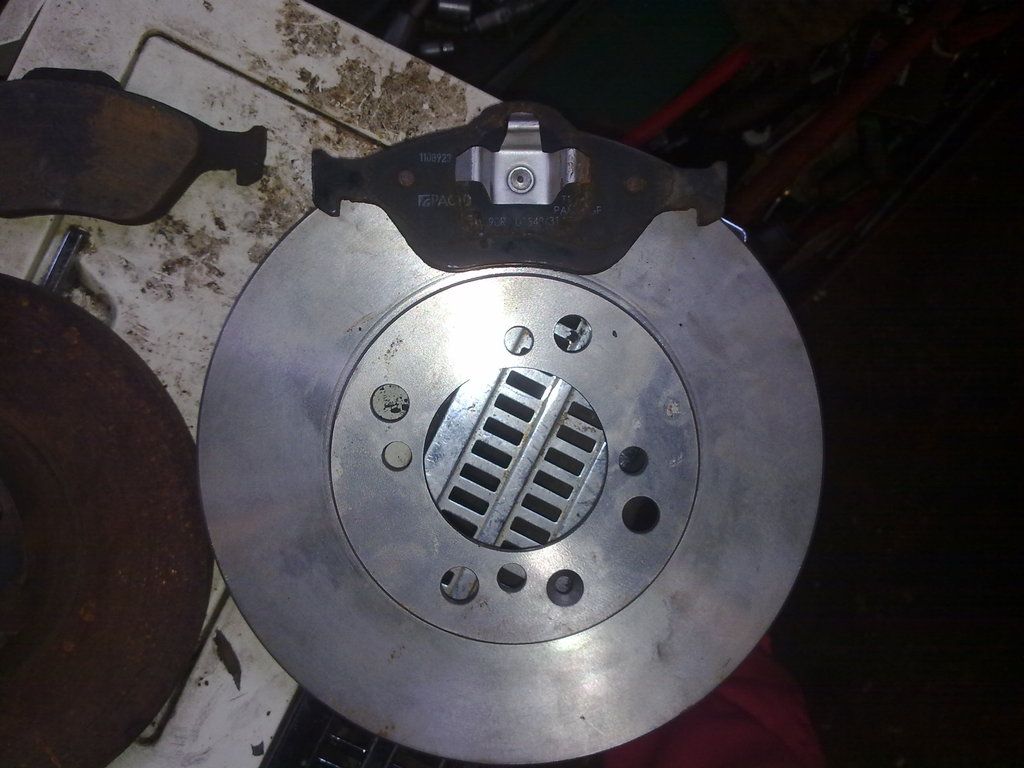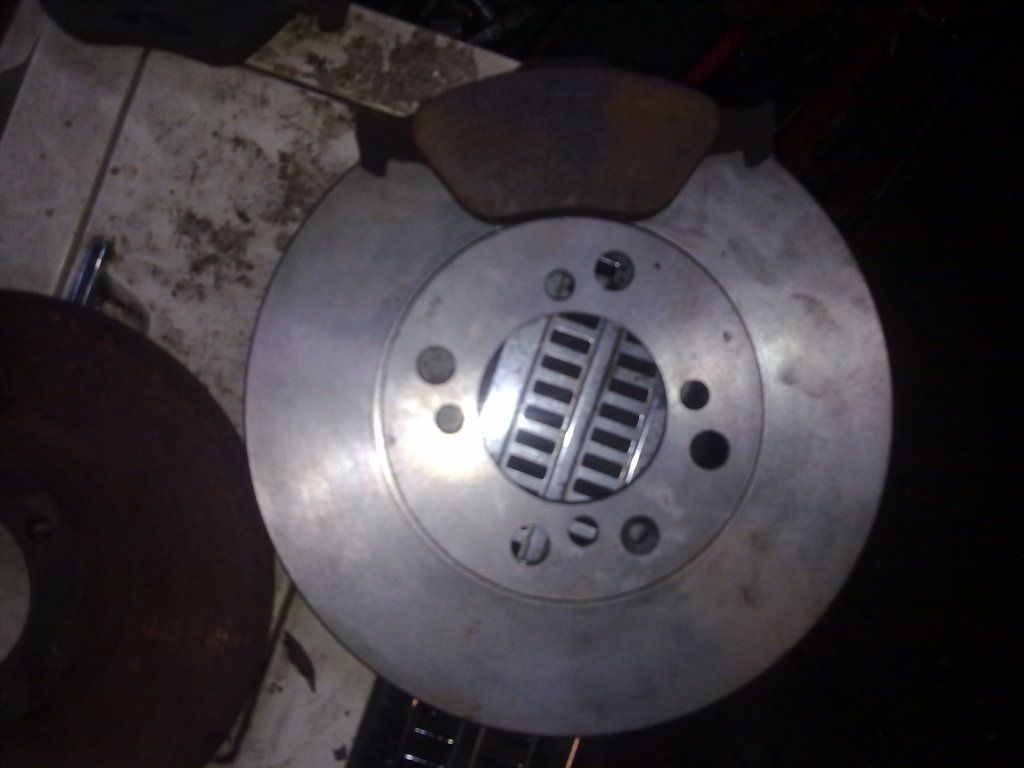
This is what I managed to extract from the images and combine on a single drawing. I do have a bit of a concern that it clearly shows the Sierra pad lining overhanging the VW disk. So either there's more parallax in the picture than it appears (camera too close to subject), or the effective pad area is quite a bit smaller than the actual pad. But if that were the case, it would show as a step in worn pads: I've seen that with the big Princess pads on a TR7 disk if you don't move one or both of the mounting holes on the calliper; and with TR7 discs, the overhangs meet before the pad wears to the backing, and they go a bit funny after that. But with a much thicker, vented disc, I don't imagin it's a problem with this set.
As a cross check, measuring the piston - hub centre distances from the drawing gives the 104.75 mm for the TJ set, and 86.25 for the Doly's. Whereas, the values Carledo measured from the parts were 104 and 87. So there's well less than one percent discrepancy.
On the basis that the overhang with the Sierra pad is real, and using only the area on the disc as the effective area value, the pad lining area change measures as 49 percent (1:1.49.1). I might do better, but I find counting very much beyond a hundred of the little squares to be a pain.
My estimate for the position of the centroid of the doly pad is, as near as I can tell, coincident with the piston centre, which is exactly what I expected.
My estimate for the distance from the hub to the centroid of the effective area of the Sierra pad is 100.00 mm – 4 mm away from the piston centre. I didn't estimate the position of the centroid of the whole Sierra pad lining area.
Assuming the same relationships between the pressure centres and the pad centroids for both sets, those values reduce the increase from moving the pressure centre from 20 percent (I wrote the piston area and larger disk effects down in the wrong order before, and it should have been 27 percent from piston area and 20 from the larger disc) to 15 percent. Still assuming the overhang is real, that reduces the overall increase in brake effort from 51 to 46 percent (1.27 * 1.15 = 1.46).
However, I'm not sure the relationships between centroids and pressure centres will be exactly the same, given the difference between the Sierra's piston and centroid centroids: I don't think that the piston overhangs the disc matters to the upgrade in effort from the piston diameters, but I suspect it will also affect the relationship between the pressure centre and centroid. So it's possible the increase in front brake effort is a little bit higher than 46 percent. It must still be less than 51 percent, and I suspect it's a bit closer to 46 percent than to 51.
That still appears to be far more than the most I believe I can ever get from improving the grip with the best possible road tires (even assuming I start from the crappiest). So, for a road car, I'd still call that a fairly massive upgrade.
Graham
The 16v Slant 4 engine is more fun than the 3.5 V8, because you mostly drive it on the upslope of the torque curve.
Factory 1977 TR7 Sprint FHC VVC 697S (Now all of, but still needs putting together)
B&Y 73 Dolomite Sprint UVB 274M (kids!)
1970 Maroon 13/60 Herald Convertable (wife's fun car).








